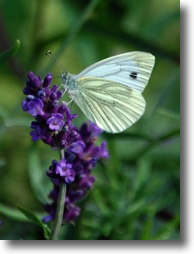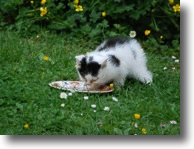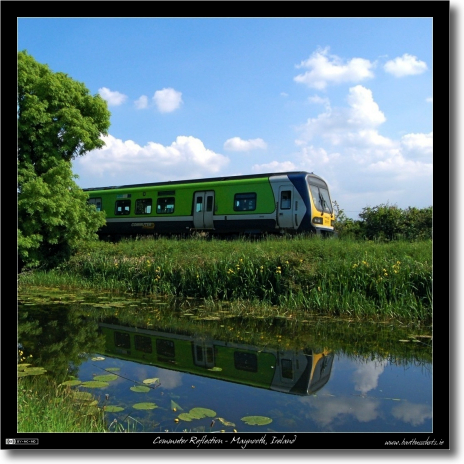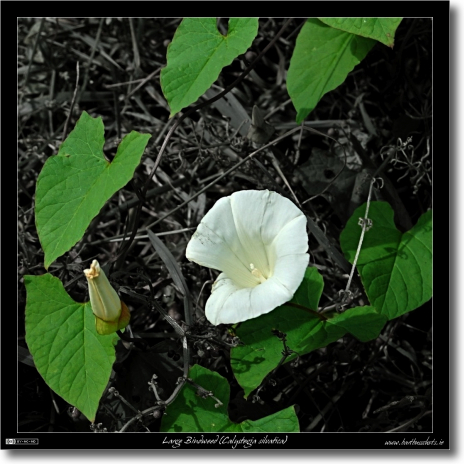Aug
13
Pondering University Fees
Filed Under Polemics & Politics | Leave a Comment
Every few years this old chestnut comes up for debate again. With particularly suspicious timing the debate on third level fees is back on the agenda again. What I can say for sure is that the system we have now is fundamentally flawed, and that change is badly needed. Re-introducing fees could either make things better or worse, depending on how it was done. It is certainly no silver bullet to just make everything better.
Lets start by looking at the system we have now. The government decide how much money a student’s tuition is worth, and pay the Universities depending on their registration numbers. There is a registration fee which the student has to pay which theoretically covers administration costs. The amount paid per undergraduate student is the same in all universities as it’s set by the government. None of this applies to post-graduate courses where the universities each set their own fees.
This may have worked well for a while, but some serious cracks are now showing themselves. At the root of the problems is that fact that the government is not paying the universities enough per student, so they’ve had to start making up the balance in other ways. All they can do is jack up the registration fee, and the fees for postgraduates, so that’s what they’ve done.
The registration fee started off as insignificant, I believe it was about £40 when I was in first year, perhaps a little more but certainly less than £100. It is now well over €800! All students pay it, regardless of means or whether or not they are in receipt of a grant. Before “free” third-level education students on grants didn’t have to worry about fees, now they have a huge “registration fee” to pay which causes real problems for the poorer segments of society, erecting a barrier to entry that wasn’t there before. Pretty ironic really, considering the whole point was to lower the barrier to entry! This is bad for the country as a whole, which is totally dependent on our education system. Our only natural resource is our educated work force, and the government in it’s ever-shorter-sightedness is jeopardising that.
The same goes for postgraduate fees. When I started the fees were about £1,250 or there-abouts. Now they are well over €6,000. The reasons are the same, because the government are not paying enough per undergraduate student, the universities have to get their money in other ways, and in this case postgraduate students are it! Many postgraduate students get their fees paid by funding agencies, but for those who don’t get that very scarce money are totally shafted. Again, badly harming our knowledge economy.
So, under the current system the universities are underfunded, the poorest students are forced to pay an extortionary “registration fee”, and postgraduate studies are prohibitively expensive for all but the very best at sitting exams. The system is clearly broken! A very persuasive argument can be made that it is wrong for the government to pay for the education of the sons and daughters of millionaires. Hence the argument for bringing back fees, but only for the very rich.
If this is done right it could work, but if it’s done wrong it won’t make any difference at all, or even make things worse! Lets start by looking at how it could be done badly. Fees never left, they are just currently paid by the government (who set the price), rather than by the parents. As long as the government are paying fees for anyone, they are hardly likely to surrender that control. The problem is the fee is too low, so changing who pays it won’t help the universities at all, it will just save the government money. There would be no extra money in the actual universities and the registration fee and the postgraduate fees would continue to rise. This is what I expect our incompetent government to try to. It’s an attractive idea to a government in panic over public expenditure. In the short-term it lets them save public money and claim a victory in aid of helping save the economy. The long-term results will be disastrous, but in the short term it will look good, and governments are insanely short-term thinkers unfortunately.
So how could it be done right? I see three things being needed:
1) The abolition of the registration fee
2) A dramatic increase in the amount universities get per-student
3) only high income families should have to pay fees
4) government expenditure on third level education should not be reduced in real terms, the money coming from the rich families should be EXTRA money for third level, money which is desperately needs!
I believe it’s important for our country that we have a strong education system. An investment in education is an investment in the very future of our economy and our nation. It is not a waste of money, and, like healthcare, not an area that should suffer cutbacks or be neglected. What really matters is that universities are properly funded, and that they are easily accessible to every young person in our society, regardless of the wealth of their parents. I don’t care how that goal is achieved, I just care that it is achieved!
Aug
12
Photo of the Week 25 – Commuter Reflection
Filed Under Photography | 3 Comments
I really don’t know why this is one of my very favourite images but it is. Maybe it’s the colours, maybe it’s the reflection. I do have a thing for reflections in photographs. This is just an ordinary Irish commuter train making it’s way from Maynooth in to Dublin along the Royal Canal on a summer evening at rush hour. For my fellow train spotters this is an Iarnród Éireann Class 29001 Diesel Multiple Unit.
For those of you interested in such things here are some of the technical details of the original shot:
- Camera: Nikon D40
- Lens: Nikon DX AFS 18-55mm (D40 kit lens)
- Exposure: 1/1000 sec
- Focal Length: 18mm
- Focal Ratio: F10
- ISO: 800
- Camera Mode: Aperture Priority
- Exposure Compensation: -0.67
[tags]train, canal, Royal Canal, Maynooth, Kidlare, Ireland, photography[/tags]
Aug
7
DNS Flaw Update
Filed Under Security, Computers & Tech | 1 Comment
I listened to Dan Kaminsiki’s Black Hat talk on the DNS flaw he discovered this afternoon (it’s on the web). I was disappointed by the lack of technical details, particularly about the client attacks, but it did answer some of my questions. For me the biggest deal was that yes, clients are vulnerable, and yes, clients do need to use port randomisation. This is what Apple failed to do in their latest update, and what Apple now need to do ASAP. Dan described the server flaw as being like a nuke, and the client flaw as being like a sniper, both will kill you if they hit you, but you defend against the nukes first, hence the focus on servers.
Another key point is that this is a temporary fix, not a permanent fix. By adding in source port randomisation we’ve bought ourselves some more time, probably a few years, but as networks continue to get faster, even this boost of entropy will cease to be enough. There are two permanent fixes, but neither are easy to deploy, and since DNS is a global system it will take time, and probably the patience of a saint, to get either implemented. At the core of the problem is the fact that DNS uses UDP, which is a connectionless protocol, making it easy to spoof packets. One way around this is so-called DNSSEC, which extends the current DNS architecture to use certificates to authenticate responses. Another solution would be to switch DNS from UDP to TCP. Both sound simple, but no change to DNS is simple, and if you get it wrong you literally kill the internet!
Bottom line, we haven’t heard the last of this yet, not nearly!
[tags]security, DNS, Blackhat, Kaminsky[/tags]
Aug
7
It’s funny how one thing will often lead to another. It’s not long since I joined the production team of the International Mac Podcast, and now I’ve been invited to join the pool of panellists for the Mac Round Table Podcast. The MRT is a very interesting idea. They have a large pool of Mac Podcasters and each week they host a round-table discussion with three to five members from this pool on some Mac related topic. Because it’s a big pool there’s a great variety of voices on the show and no two weeks are the same. If you’re tying to figure out which Mac podcasts to subscribe to, the MRT is a great place to start since you get to hear lots of Mac podcasters in one place. I’m exceptionally honoured to have been invited into the pool. I recorded my first show last night with Don McAllister, Joseph Nilo, Chuck Joiner & Dave Hamilton, so keep an eye out for it on the RSS feed.
Aug
5
July Photos Uploaded
Filed Under Photography | Leave a Comment
 I’m a lot more on the ball this month, I just got the last of my July photos uploaded today. Lots of shots I’m really happy with this month, including some lovely shots of butterflies and Geraldine (AKA Maynooth) Castle. Some of these shots are HDRs that I’m very happy with because they don’t look like HDRs.
I’m a lot more on the ball this month, I just got the last of my July photos uploaded today. Lots of shots I’m really happy with this month, including some lovely shots of butterflies and Geraldine (AKA Maynooth) Castle. Some of these shots are HDRs that I’m very happy with because they don’t look like HDRs.
Aug
3
Photo of the Week 24 – Large Bindweed
Filed Under Photography | Leave a Comment
Technically this flower is a terrible weed, you really don’t want this in your garden, but it’s still beautiful! This shot is clearly processed but I hope you’ll agree that it’s been done tastefully. What I’ve done is desaturate everything in the shot apart from the flowers and leaves of the Bindweed so that it stands out from the grass that it was growing amidst.
I got this shot while mountain biking along the towpath of the Royal Canal between Maynooth and Leixlip, or to be more precise, between Pike’s Bridge and Deey Bridge.
For those of you interested in such things here are some of the technical details of the original shot:
- Camera: Nikon D40
- Lens: Nikon DX AFS 18-55mm (D40 kit lens)
- Exposure: 1/320 sec
- Focal Length: 55mm
- Focal Ratio: F8
- ISO: 200
- Camera Mode: Auto
- Exposure Compensation: 0.0
The processing was done using the GIMP. I used this image in my tutorial demonstrating this technique.
[tags]wild flower, flower, blossom, Bindweed, photography, Maynooth, Kidlare, Ireland[/tags]
Aug
2
The Apple DNS Saga Continues
Filed Under Security, Computers & Tech | 1 Comment
Yesterday Apple released security update 2008-005 which was supposed to fix the DNS flaw I recently complained about Apple not having fixed yet. Well, it appears that Apple only half-fixed the problem. Yes, they have fixed the BIND DNS server in OS X, but in reality that only protects X-Serves running a DNS server. Sure, regular OS X ships with the BIND DNS server installed, but it’s not on by default, and almost no one turns it on. What we all use all the time is the stub resolver that’s part of OS X, and that’s what Apple didn’t fix. This means that regular Mac users are still not protected from this DNS flaw while just about everyone else is.
[tags]Apple, OS X, DNS, vulnerability, security[/tags]
Jul
30
OS X Users Vulnerable – Apple Still Don’t Get Security
Filed Under Security, Computers & Tech | 26 Comments
One of the things I really love about OS X is its Unix underpinnings. Under the hood we get all the *nix tools and utilities I’ve come to know and love. Printing with CUPS, remote shell with OpenSSH, Windows sharing with SAMBA, web publishing with Apache, and so on and so forth. This gives OS X great power, but it also places a great responsibility on Apple. Just like with any other software, vulnerabilities surface in open source programs. In general the open source community is very responsive to security issues, and patches are released quickly. Those patches protect those who update, but they leave those who don’t even more vulnerable. The reason for this is that the patches can generally be reverse engineered, making it easy for the bad guys to attack un-patched machines. In order to keep OS X secure Apple need to push out patches in the open source components in OS X to users as quickly as possible. This is where Apple fall down, they are notoriously slow at getting patches out.
[tags]Security, OS X, Apple, DNS, open source, BIND[/tags]
Jul
30
June Photos Uploaded at Last
Filed Under Photography | Leave a Comment
 I’ve finally gotten around to getting my photos from June uploaded to my photo archive. I didn’t shoot much in June because the weather wasn’t great. With the exception of two shots of a rainbow it’s kittens all the way!
I’ve finally gotten around to getting my photos from June uploaded to my photo archive. I didn’t shoot much in June because the weather wasn’t great. With the exception of two shots of a rainbow it’s kittens all the way!
Jul
29
Photo of the Week 23 – Dog Rose
Filed Under Photography | 1 Comment
When it comes to Irish wild flowers I’ve always considered the wild, or Dog, Rose (Rosa canina agg.) to be a real treasure. They’re quite rare, and in my mind, spectacular. They range from subtle pinks to pure white, this one is about as pink as they get. Compared to the fancy blossoms on modern garden roses the Dog Rose is exceptionally plain, but I like it’s simplicity, almost makes the modern garden varieties seem vulgar and over-the-top.
This shot was taken in the extensive grounds of what’s now the Farnham Radisson SAS hotel in Cavan. It was once the Farnham Estate and the lands contain some fabulous woodlands which are now open to the public. It’s at the edge of this woodland that I snapped this fine example of a Dog Rose.
For those of you interested in such things here are some of the technical details of the original shot:
- Camera: Nikon D40
- Lens: Nikon DX AFS 18-55mm (D40 kit lens)
- Exposure: 1/250 sec
- Focal Length: 55mm
- Focal Ratio: F8
- ISO: 200
- Camera Mode: Auto
- Exposure Compensation: 0.0
[tags]wild flower, flower, blossom, rose, Dog Rose, photography, Cavan, Ireland[/tags]









